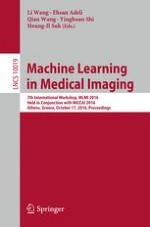2016 | OriginalPaper | Buchkapitel
Multi-resolution-Tract CNN with Hybrid Pretrained and Skin-Lesion Trained Layers
verfasst von : Jeremy Kawahara, Ghassan Hamarneh
Erschienen in: Machine Learning in Medical Imaging
Aktivieren Sie unsere intelligente Suche, um passende Fachinhalte oder Patente zu finden.
Wählen Sie Textabschnitte aus um mit Künstlicher Intelligenz passenden Patente zu finden. powered by
Markieren Sie Textabschnitte, um KI-gestützt weitere passende Inhalte zu finden. powered by
